Bathtub
How Do You Replace a Bathtub Drain

I’ve been there before, standing in a puddle of water as my bathtub drain refuses to do its job. But fear not, because I’ve got the solution for you.
In this article, I’ll walk you through the step-by-step process of replacing a bathtub drain. With just a few tools and materials, you’ll be able to say goodbye to that pesky clog and hello to a smoothly flowing drain.
So let’s roll up our sleeves and get to work!
Key Takeaways
- Use the appropriate tools and materials, such as a drain wrench and plumber’s putty, when replacing a bathtub drain.
- When removing the old drain, unscrew the drain cover, locate the drain flange, and use pliers or a drain key to loosen and remove the drain flange.
- When installing the new drain, ensure proper alignment with the bathtub’s drain pipe and choose the correct type of drain for the bathtub.
- Test the drain by filling the bathtub with water, checking for leaks, inspecting the drain cover, and listening for any unusual noises during drainage.
Tools and Materials Needed
You’ll need a few tools and materials to replace a bathtub drain.
First, gather your plumbing supplies, including a new bathtub drain assembly, a drain wrench, and plumber’s putty.
You’ll also need a pair of pliers, a screwdriver, and a bucket to catch any water that may spill during the repair process.
Start by removing the old drain cover with a screwdriver, then use the drain wrench to loosen and remove the old drain assembly.
Clean the area around the drain hole and apply a thin layer of plumber’s putty to the underside of the new drain assembly.
Insert the new drain into the hole and tighten it with the drain wrench.
Removing the Old Drain
To remove the old drain, start by unscrewing the drain cover using a screwdriver. Once the drain cover is removed, you will need to follow these steps:
- Locate the drain flange, which is the round metal ring around the drain opening.
- Use a pliers or a drain key to loosen and remove the drain flange by turning it counterclockwise.
- Pull out the drain flange and set it aside.
Inspect the drain pipe for any debris or buildup that may be causing common drain problems. Use a drain snake or a wire brush to clean out any clogs or obstructions in the drain pipe.
Installing the New Drain
Once the drain cover is removed, it’s time to install the new drain. Before starting the installation process, it’s important to be aware of common installation mistakes to avoid any future issues.
One common mistake is not properly aligning the drain with the bathtub’s drain pipe. This can lead to leaks and water damage.
Another mistake is not using the correct type of drain for your bathtub. There are different types of bathtub drains, such as toe-touch, trip lever, and lift and turn drains. It’s crucial to choose the right type of drain that matches your bathtub’s design and functionality.
Additionally, make sure to properly tighten all connections and seals to prevent any water leakage.
Testing the Drain
After installing the new drain, it’s important to test it for any potential leaks or issues. Proper testing ensures that the drain is functioning correctly and prevents any future problems. Here are some steps to follow when testing your bathtub drain:
- Fill the bathtub with water and let it sit for a few minutes.
- Check for any water leakage around the drain area.
- Inspect the drain cover for any signs of damage or loose screws.
- Test the drain’s ability to hold water by slowly releasing the water and observing if it drains properly.
- Listen for any unusual gurgling or sucking noises during the drainage process.
By conducting these tests, you can identify and address any common bathtub drain problems, such as leaks or clogs, before they become major issues.
Now, let’s move on to some helpful tips and troubleshooting techniques for maintaining your bathtub drain.
Tips and Troubleshooting
Now let’s explore some useful tips and troubleshooting techniques to keep your bathtub drain in good condition.
One of the most common problems with bathtub drains is clogging. To prevent this, it’s important to regularly clean the drain by removing any hair or debris that may have accumulated.
Another common issue is potential leaks, which can cause water damage if not addressed promptly. To check for leaks, fill the tub with water and see if there are any visible signs of water escaping. If you notice any leaks, it’s important to repair them as soon as possible to prevent further damage.
Additionally, using a drain cover can help prevent larger debris from entering the drain and causing clogs.
Conclusion
In conclusion, replacing a bathtub drain may seem daunting, but it can be easily accomplished with the right tools and know-how. By following the outlined steps and using proper techniques, you can successfully remove the old drain and install a new one.
Don’t let this project drain your enthusiasm. Take it step by step, and soon you’ll be enjoying a fully functional bathtub once again.
Remember, a stitch in time saves nine. So, don’t put off fixing that faulty drain any longer!
Mateo’s flair for writing is matched only by his keen eye for design. As an interior designer turned writer, Mateo brings a unique perspective. He blends aesthetics with functionality in every piece he pens, providing readers with beautifully crafted content that’s also supremely useful.
Mateo loves exploring the latest bathroom tech trends and is our expert on smart toilets. When he’s not writing or designing, Mateo can be found sketching ideas for his next big project at local coffee shops.
Bathtub
Can You Use a Power Shower Without Electricity

Do you find it frustrating to depend on electricity for a rejuvenating power shower? Don’t worry, we have some alternative solutions that will help you stay clean and fresh without requiring a power source.
In this article, we’ll explore portable shower solutions, gravity-fed systems, solar-powered alternatives, and hand pump showers.
So, if you’re ready to master the art of staying clean even when the lights go out, let’s dive in!
Key Takeaways
- Portable shower options are practical and convenient for showering without electricity, as they are lightweight and easy to transport.
- Gravity-fed shower systems are a viable option that relies on the force of gravity for water pressure, making them simple and reliable without the need for electricity.
- Solar-powered shower solutions are an eco-friendly alternative that use solar energy to heat water efficiently and reduce reliance on electricity.
- Hand pump showers are a practical choice in remote areas or during power outages, as they require no electricity and are portable and easy to install.
Portable Shower Options
When it comes to finding a solution for showering without electricity, one option that we’ve found to be practical and convenient is using a portable shower.
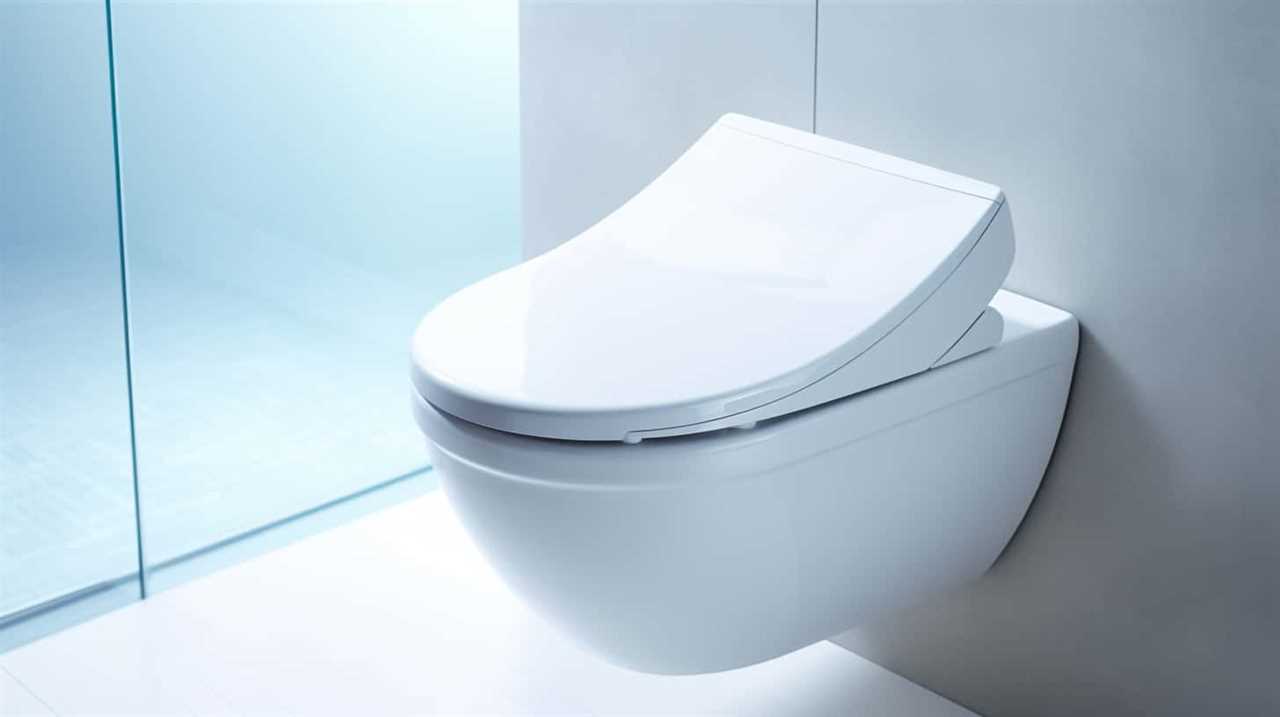
Portable showers are commonly used in camping scenarios, where access to electricity may be limited. These showers are designed to be lightweight and easy to transport, making them ideal for outdoor use. They typically consist of a water reservoir, a shower head, and a pump mechanism.
One advantage of portable showers is their water-saving feature. Many models are equipped with water-saving technology, such as adjustable flow rates and spray patterns, which help conserve water while still providing an enjoyable shower experience.
Additionally, some portable showers are designed to be solar-powered, utilizing the sun’s energy to heat the water. This further reduces the need for electricity and makes them even more eco-friendly.
Gravity-Fed Shower Systems
Although it may seem counterintuitive, using a gravity-fed shower system is a viable option for showering without electricity. Gravity-fed shower systems rely on the force of gravity to provide water pressure, making them ideal for low pressure showers or water saving solutions.

These systems work by using a water source placed at a higher elevation than the showerhead. As the water flows down, it creates enough pressure to provide a satisfying shower experience.
One advantage of gravity-fed shower systems is their simplicity and reliability. They don’t require any electricity or complex components, making them easy to install and maintain.
Additionally, these systems are environmentally friendly, as they reduce water consumption by using only the necessary amount of water for each shower.
Solar-Powered Shower Solutions
To continue our exploration of alternative showering options, let’s now delve into the realm of solar-powered shower solutions.

Solar-powered water heaters are an eco-friendly shower alternative that harnesses the power of the sun to heat water. Here are three key considerations when it comes to solar-powered shower solutions:
- Efficiency: Solar water heaters are designed to maximize the conversion of solar energy into heat, ensuring efficient water heating.
- Storage: These systems include a storage tank where heated water is stored for later use, allowing for continuous hot water availability.
- Backup Systems: Some solar-powered shower solutions come with backup systems, such as electric or gas heaters, to ensure hot water supply during cloudy days or periods of high demand.
Hand Pump Showers
We frequently rely on electricity for power showers, but hand pump showers offer an alternative solution. While electric pumps provide convenience and consistent water pressure, hand pump showers can be a practical choice in certain situations. These manual shower options are especially useful in remote areas where electricity is not readily available or during power outages.
| Hand Pump Showers | Electric Pump Showers |
|---|---|
| No electricity needed | Requires electricity |
| Portable and easy to install | Requires professional installation |
| Water pressure dependent on user’s strength | Consistent water pressure |
| Suitable for outdoor use | Suitable for indoor use |
Hand pump showers require no electricity, making them an eco-friendly choice. They are portable and can be easily installed, providing a convenient solution for camping trips or off-grid living. However, the water pressure in hand pump showers relies on the user’s strength, which may not be as consistent as electric pump showers. Ultimately, the choice between hand pump and electric pump showers depends on the specific needs and preferences of the user.
Alternative Methods for Staying Clean
There are various alternative methods we can use to stay clean without relying on a power shower. Here are some water-saving techniques and DIY shower alternatives to consider:

- Dry shampoo: A quick and easy way to freshen up your hair without using water.
- Wet wipes: Perfect for freshening up your body when you don’t have access to a shower.
- Basin wash: Fill a basin with warm water and use a washcloth or sponge to cleanse your body.
- Bucket shower: Fill a bucket with water and use a cup or small container to pour water over yourself.
- Solar shower: Utilize the sun’s heat to warm up a bag of water and hang it for a makeshift shower.
- Portable camping showers: These compact devices use a gravity-fed system and can be used anywhere.
Frequently Asked Questions
How Does a Portable Shower Differ From a Power Shower?
A portable shower differs from a power shower in terms of convenience and mobility. The portable shower offers benefits such as easy transportation and setup, while the power shower provides advantages like high water pressure and consistent temperature control.
Can a Gravity-Fed Shower System Provide Enough Water Pressure for a Satisfying Shower Experience?
Using a gravity-fed shower system, one can enjoy a satisfying shower experience without relying on electricity. However, compared to the convenience and power of a portable shower, the water pressure may be lower.
Are Solar-Powered Shower Solutions Practical for Everyday Use?
Solar-powered shower solutions are practical for everyday use. The efficiency of these showers is dependent on the amount of sunlight available. However, the initial cost of solar-powered showers can be high, making them less accessible for some individuals.
How Does a Hand Pump Shower Work and Is It Easy to Use?
A hand pump shower operates by manually pumping water to create water pressure. It is easy to use, requiring repetitive pumping, and can provide a satisfying shower experience without the need for electricity.

What Are Some Alternative Methods for Staying Clean When a Power Shower Is Not Available?
Portable showers and water saving techniques are essential when a power shower is unavailable. We’ll explore alternative methods for staying clean, ensuring you have the knowledge to master cleanliness even without electricity.
Conclusion
In conclusion, when it comes to using a power shower without electricity, there are a variety of options available. From portable showers to gravity-fed systems, solar-powered solutions, and hand pump showers, there are alternative methods for staying clean even without access to electricity.
So, whether you’re camping in the wilderness or experiencing a power outage, don’t fret, as there are ways to enjoy a refreshing shower experience that will leave you feeling rejuvenated and ready to take on the day.
As they say, when it comes to cleanliness, where there’s a will, there’s a way.

With an impeccable eye for detail and a passion for bathroom-related, Ava leads our editorial team gracefully and precisely.
Under her guidance, Best Modern Toilet has flourished as the go-to resource for modern bathroom enthusiasts. In her free time, you might find Ava exploring antique shops and looking for vintage bathroom fixtures to add to her collection.
Bathtub
How Do You Dissolve Something Stuck in the Toilet

Have you ever encountered a stubborn blockage in your toilet? It’s a common issue that many of us have faced. But don’t worry, we’re here to help you with tips on how to dissolve that troublesome obstruction.
In this article, we’ll walk you through identifying the object, choosing the perfect dissolving agent, preparing the toilet, applying the solution, and monitoring the progress.
With our practical tips and tricks, you’ll soon have your toilet back in working order. So let’s get started!
Key Takeaways
- Visually inspect the toilet bowl for any visible objects or debris.
- Seek professional help if unable to determine the cause or if the object is lodged too far down the drain.
- Read instructions and warning labels before using any dissolving agent.
- Exercise caution and call a professional plumber if unsure or if the blockage persists.
Identify the Object
To identify the object causing the obstruction, we can start by visually inspecting the toilet bowl. Carefully examine the water level and look for any visible objects or debris. It’s important to determine the cause of the blockage before attempting any DIY solutions.

If the object is within reach, you may consider using gloves or tongs to remove it. However, if you’re unable to determine the cause or if the object is lodged too far down the drain, it’s best to seek professional help. Plumbing experts have the necessary tools and expertise to safely and effectively remove any stubborn obstructions.
Choose the Right Dissolving Agent
We recommend using an appropriate dissolving agent to safely and effectively remove an object stuck in the toilet. Safety precautions are important when choosing a dissolving agent, as some chemicals can be harmful if not handled correctly. Always read the instructions and warning labels before using any product.
Look for a dissolving agent specifically designed for toilet clogs, as they’re formulated to break down organic matter without damaging the plumbing. Avoid using harsh chemicals such as bleach or drain cleaners, as they can corrode pipes and cause more damage.
If you prefer to try alternatives to dissolving agents, you can attempt using a plunger or a toilet auger to dislodge the object. Remember to exercise caution and consider calling a professional plumber if you’re unsure or if the blockage persists.

Prepare the Toilet
After choosing the right dissolving agent, it’s important to properly prepare the toilet for the removal process. This step ensures a more effective and efficient solution to the problem at hand. To prepare the toilet, follow these simple steps:
- Toilet bowl maintenance: Before attempting any kind of removal process, it’s essential to ensure that your toilet bowl is clean and free from any debris. Use a toilet bowl cleaner and a brush to thoroughly clean the inside of the bowl.
- Preventing clogs in the toilet: Regular maintenance is key to preventing clogs in the toilet. Avoid flushing large amounts of toilet paper or any other non-flushable items. Additionally, consider using a toilet plunger regularly to keep the pipes clear.
Apply the Dissolving Agent
Now let’s move on to applying the dissolving agent to effectively remove the stuck object in the toilet. There are several advantages to using a dissolving agent.
Firstly, it can break down the object, making it easier to remove.
Secondly, it can help to dissolve any residue or buildup in the pipes, improving the overall flow of the toilet.
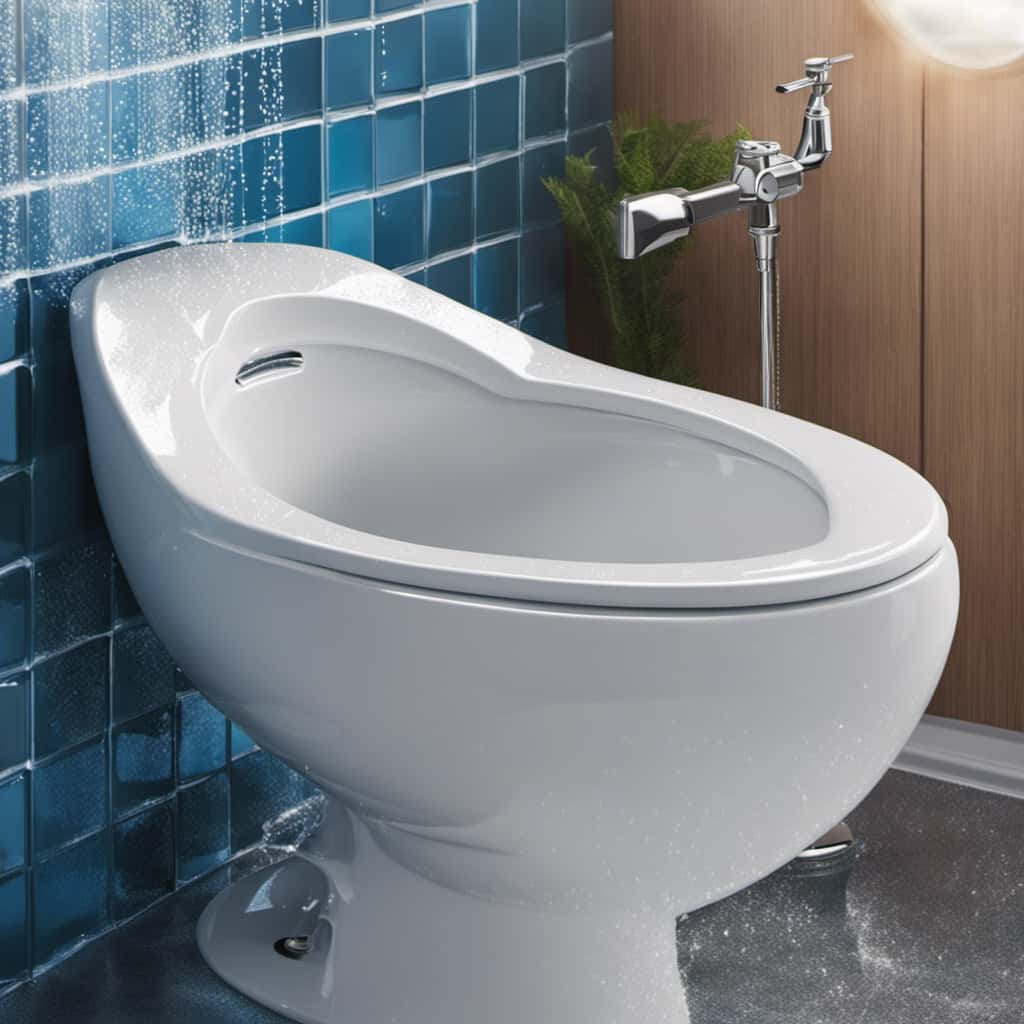
However, there are also some disadvantages to consider.
Some dissolving agents may contain harsh chemicals that can be harmful to the environment or cause damage to the toilet if not used correctly.
Therefore, it’s important to follow safety precautions when using a dissolving agent.
Always wear protective gloves and goggles, and make sure to read and follow the instructions on the product carefully.

Remember to keep the area well-ventilated and avoid mixing different chemicals together, as this can produce toxic fumes.
Monitor and Flush
Continuing to apply the dissolving agent, we monitor the toilet for any signs of progress and then flush to assess the effectiveness of the treatment.
Regular maintenance is essential to prevent clogs and keep the toilet functioning properly. By regularly inspecting and cleaning the toilet, you can identify any potential issues and address them before they become major problems.
Additionally, consider alternative solutions to dissolve the object stuck in the toilet. For example, using a plunger or a plumbing snake can help dislodge the obstruction. Another option is to use a mixture of baking soda and vinegar, which can help break down the blockage.

Remember to always follow safety precautions and consult a professional if the problem persists.
With regular maintenance and alternative solutions, you can effectively dissolve something stuck in your toilet.
Frequently Asked Questions
How Long Does It Usually Take for a Dissolving Agent to Work on a Stuck Object in the Toilet?
It usually takes a dissolving agent some time to work on a stuck object in the toilet. The time can vary depending on the specific agent and the size of the object.
Can I Use a Plunger to Remove the Stuck Object Before Applying a Dissolving Agent?
Before applying a dissolving agent, we can try using a plunger to remove the stuck object. It can help dislodge the blockage, but there are pros and cons. Remember, "Where there’s a will, there’s a way."
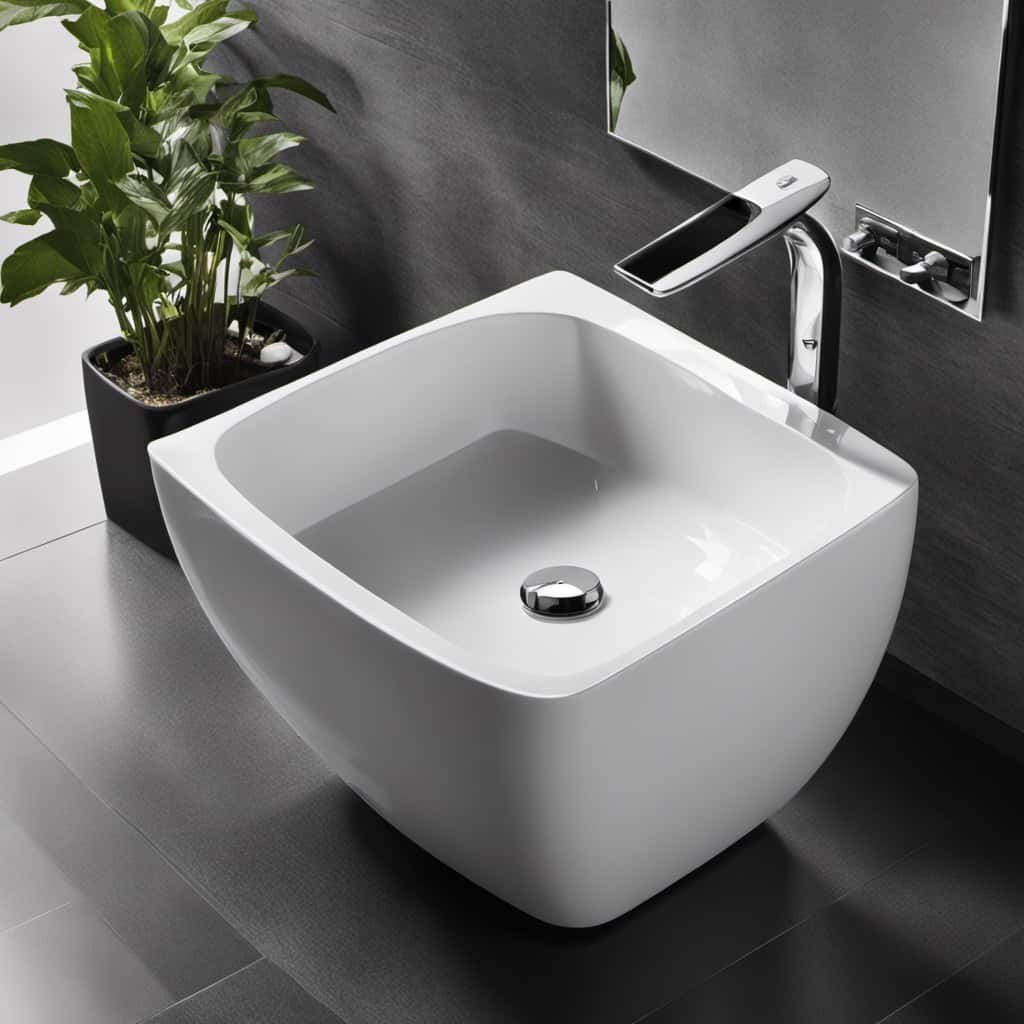
Is It Safe to Use a Dissolving Agent if the Object Stuck in the Toilet Is Made of Plastic?
It is important to consider the safety precautions when using dissolving agents in toilets with plastic objects. While some dissolving agents may be effective on certain materials, they can potentially damage plastic.
Are There Any Natural or Homemade Alternatives to Commercial Dissolving Agents?
Natural alternatives and homemade solutions can be effective in dissolving objects stuck in the toilet. We’ve found that vinegar, baking soda, and hot water can work wonders, without the need for harsh chemicals.
What Should I Do if the Stuck Object Is Too Large or Too Hard to Dissolve?
If the object is too large or hard to dissolve, we recommend using alternatives to dissolving agents, such as a plunger or a toilet auger. If that doesn’t work, it’s best to seek professional help.
Conclusion
In conclusion, when dealing with something stuck in the toilet, it’s important to identify the object and choose the right dissolving agent.
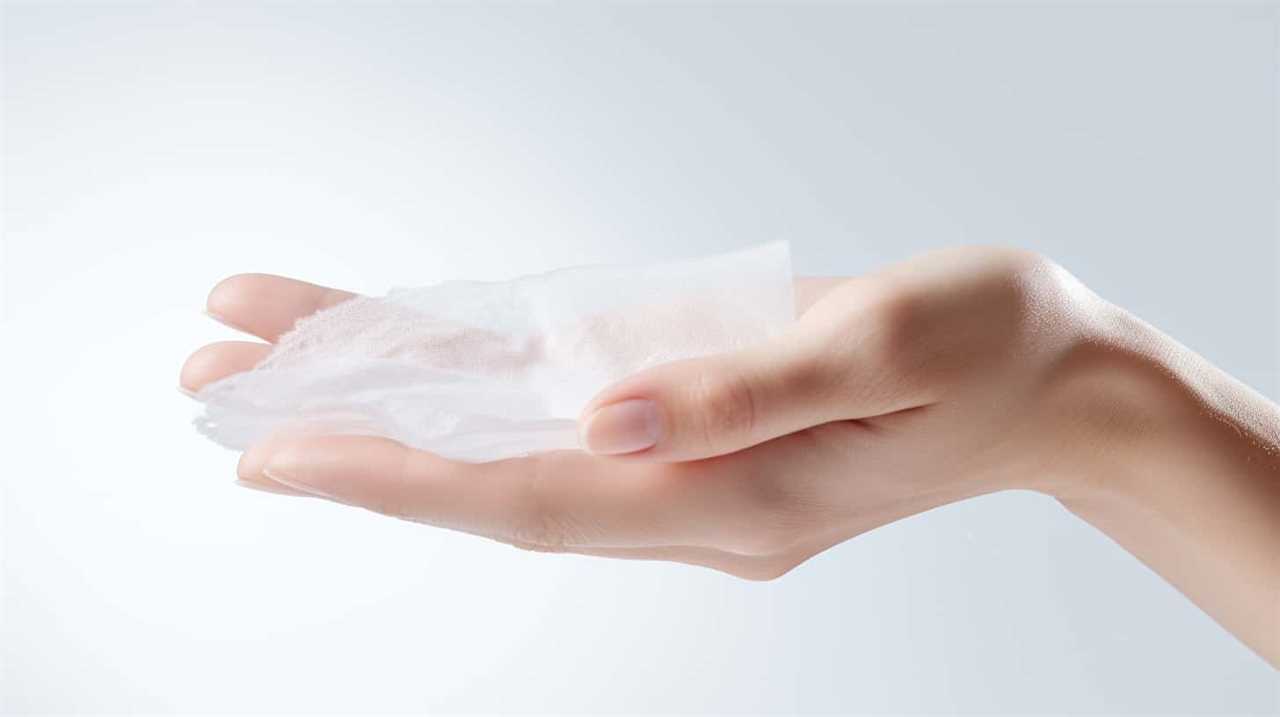
By preparing the toilet and applying the agent properly, you can effectively dissolve the obstruction.
Remember to monitor the progress and flush as necessary.
Did you know that according to a survey, 1 in 5 people have experienced a clogged toilet at least once in their lives?
With an impeccable eye for detail and a passion for bathroom-related, Ava leads our editorial team gracefully and precisely.
Under her guidance, Best Modern Toilet has flourished as the go-to resource for modern bathroom enthusiasts. In her free time, you might find Ava exploring antique shops and looking for vintage bathroom fixtures to add to her collection.
Bathtub
Is It Safe to Flush Floss Down the Toilet

As owners of our space, we frequently consider the safety of routine behaviors. One question we’ve considered is if it’s safe to flush dental floss down the toilet.
In this informative article, we will delve into the potential consequences of this seemingly innocent act. From the impact on plumbing systems to the environmental implications, we will explore the facts and provide safer alternatives for floss disposal.
So, let us embark on this journey of knowledge together.
Key Takeaways
- Flushing floss down the toilet can cause clogs in the plumbing system.
- Floss is not biodegradable and can get tangled with other debris in the pipes.
- Flushing floss contributes to environmental pollution, as it can break down into harmful microplastics in water bodies.
- Safe alternatives for floss disposal include using biodegradable floss and disposing of it in the trash instead of flushing it down the toilet.
Potential Consequences of Flushing Floss
One potential consequence of flushing floss down the toilet is that it can cause clogs in the plumbing system. Floss isn’t biodegradable and can easily get tangled with other debris in the pipes, leading to blockages. These blockages can result in backups, leaks, and even burst pipes if left untreated. Therefore, it’s important to be mindful of how we dispose of used dental floss. Many people may be tempted to simply flush it down the toilet without giving it a second thought. However, it’s crucial to properly dispose of floss in the trash to prevent any potential damage to the plumbing system.

Moving forward, let’s explore the impact that flushing floss down the toilet can have on plumbing systems.
Impact on Plumbing Systems
Flushing floss down the toilet can have detrimental effects on plumbing systems, potentially leading to clogs and damage. When floss is flushed, it can become entangled with other debris, such as hair and toilet paper, causing blockages in the pipes. Over time, these blockages can lead to water backup, resulting in water damage to the surrounding areas.
Furthermore, the floss itself isn’t biodegradable and can accumulate in the pipes, further contributing to clogs. The accumulation of floss can also cause damage to the plumbing system, leading to costly repairs. It’s important to note that even if the floss appears to flush down smoothly, it can still get caught in the pipes further down the line, eventually causing clogs and plumbing issues.
It’s best to dispose of floss in the trash to prevent these potential problems.

Environmental Implications
When we flush floss down the toilet, we contribute to potential environmental implications. Here are three reasons why floss pollution and water treatment challenges arise from this practice:
- Microplastic Pollution: Floss is typically made of plastic, which doesn’t biodegrade easily. When flushed, it can end up in water bodies, where it breaks down into harmful microplastics. These tiny particles can be ingested by marine life, causing harm to ecosystems.
- Clogging and Maintenance: Floss can accumulate in sewage pipes and cause blockages. This leads to increased maintenance costs for water treatment facilities, as they’ve to remove these obstructions to ensure proper functioning.
- Wastewater Treatment Challenges: Floss isn’t easily captured by conventional wastewater treatment processes. Due to its small size and composition, it can bypass filtration systems and end up in the environment, contributing to pollution and negatively impacting water quality.
To mitigate these environmental implications, it’s important to dispose of floss properly in the trash, rather than flushing it down the toilet.
Safer Alternatives for Floss Disposal
To ensure the proper disposal of floss and prevent environmental harm, we can explore safer alternatives that don’t involve flushing it down the toilet. One option is to choose biodegradable floss made from natural materials such as silk or bamboo. These types of floss will break down over time, reducing their impact on the environment.
Additionally, some companies offer recycling options for floss containers, allowing you to dispose of them responsibly. Look for recycling programs in your area or check with your local waste management facility to see if they accept floss containers.

By opting for biodegradable floss and recycling the containers, we can minimize the environmental impact of floss disposal.
Now, let’s move on to the summary and recommendations section to explore the key takeaways from this discussion.
Summary and Recommendations
Now let’s delve into our summary and recommendations for the proper disposal of floss, taking into account the safer alternatives discussed earlier.
Based on our research, here are our recommendations for the proper disposal of floss:
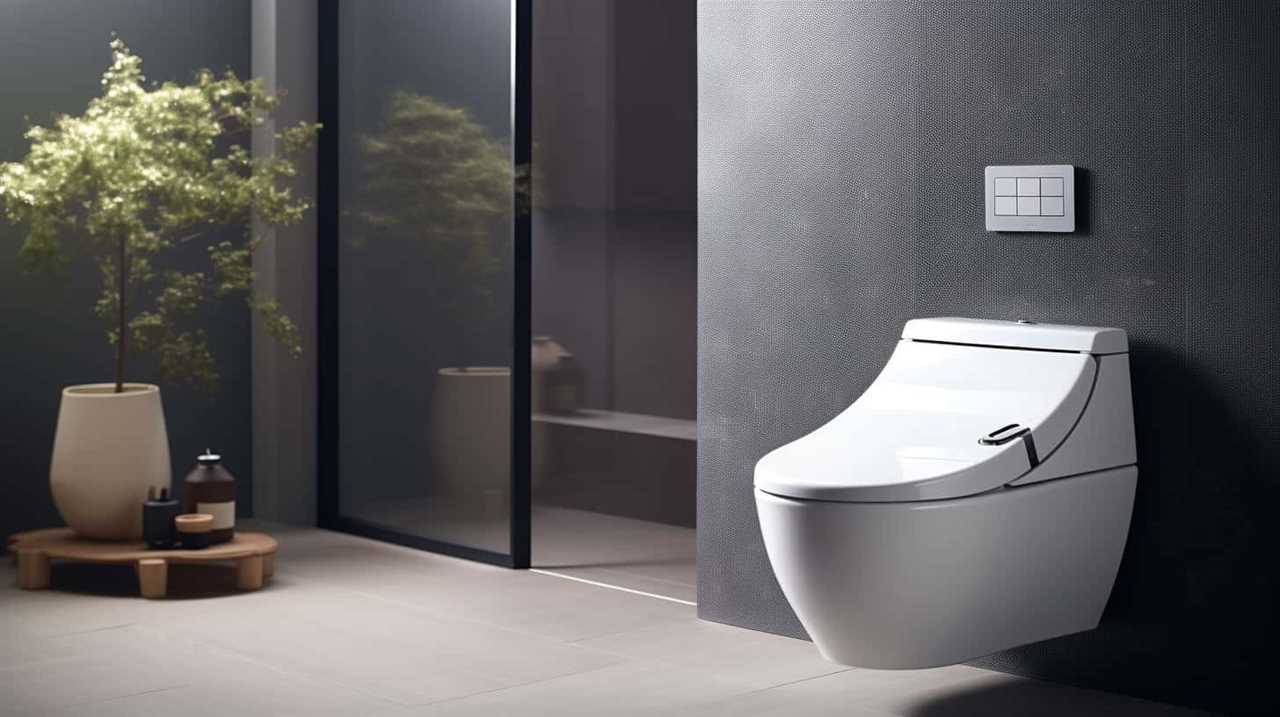
- Dispose of floss in the trash: Instead of flushing it down the toilet, simply wrap the used floss around your fingers and throw it in the trash. This ensures that it doesn’t end up causing any plumbing issues or harm to the environment.
- Consider eco-friendly alternatives: If you’re concerned about the environmental impact of traditional floss, there are eco-friendly options available, such as biodegradable floss made from silk or cornstarch. These alternatives are just as effective for proper oral hygiene.
- Stick to proper flossing techniques: Regular flossing is crucial for maintaining good oral health. Make sure to use the correct technique, gently sliding the floss between your teeth and along the gum line to remove plaque and debris.
Frequently Asked Questions
Can Flushing Floss Down the Toilet Cause Damage to the Sewage System?
Flushing floss down the toilet can cause damage to plumbing and have an environmental impact. It’s important to note that materials like floss can clog pipes and contribute to sewage system issues.
Does Flushing Floss Down the Toilet Contribute to Clogged Pipes?
Flushing floss down the toilet can contribute to clogged pipes. It’s important to dispose of floss properly, such as in the trash. This prevents potential damage to the sewage system and ensures its smooth operation.
Can Flushing Floss Down the Toilet Harm Marine Life?
Flushing floss down the toilet may seem harmless, but it can have a detrimental impact on marine life and contribute to marine pollution. The environmental consequences are significant and should not be underestimated.
Are There Any Other Safe Alternatives for Disposing of Floss?
Safe alternatives for disposing of floss should be considered due to the potential environmental impact. We should explore options like throwing it in the trash or using biodegradable floss that can be composted.

What Are the Main Recommendations for Proper Floss Disposal?
Proper floss disposal includes avoiding flushing it down the toilet. Instead, eco-friendly floss options like biodegradable floss or compostable floss can be used, ensuring responsible waste management.
Conclusion
In conclusion, it isn’t safe to flush floss down the toilet. Doing so can lead to clogs in plumbing systems and have detrimental environmental implications.
To avoid these potential consequences, it’s recommended to dispose of floss in a safer alternative, such as wrapping it in tissue and throwing it in the trash.
Remember, a small change in our habits can have a big impact on the world around us.
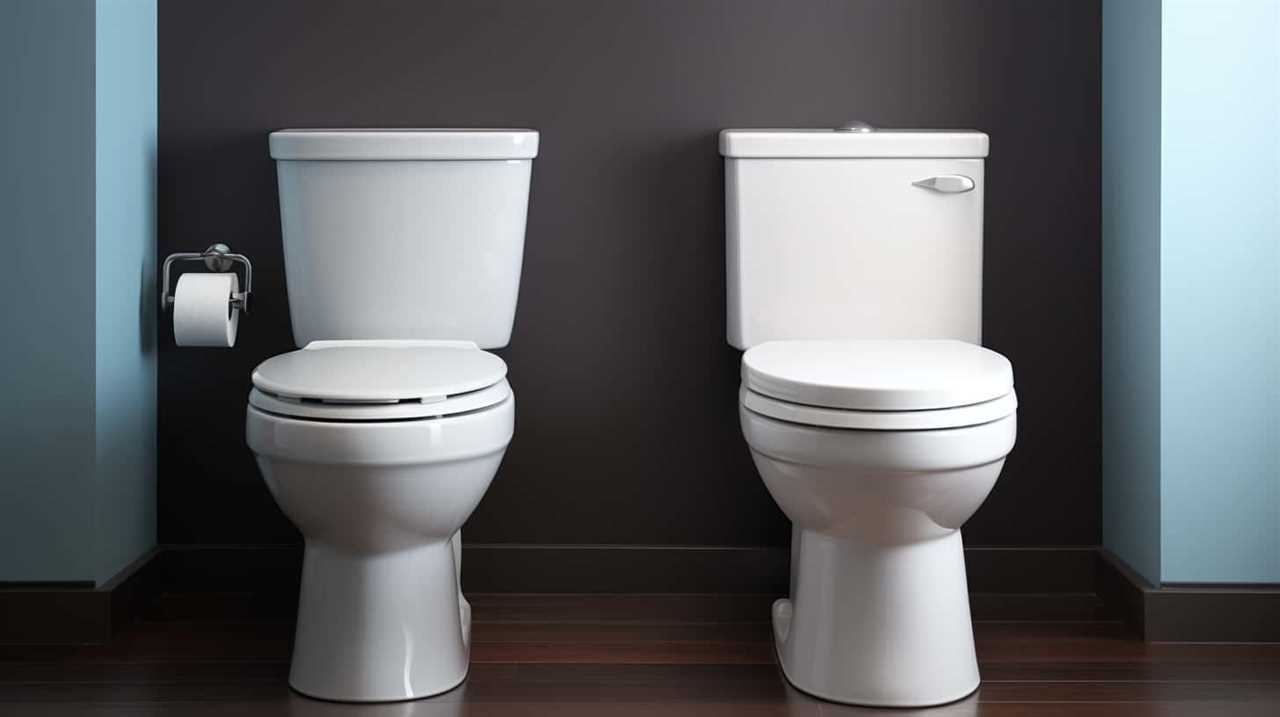
With an impeccable eye for detail and a passion for bathroom-related, Ava leads our editorial team gracefully and precisely.
Under her guidance, Best Modern Toilet has flourished as the go-to resource for modern bathroom enthusiasts. In her free time, you might find Ava exploring antique shops and looking for vintage bathroom fixtures to add to her collection.
-

 Bathroom Enhancements3 months ago
Bathroom Enhancements3 months agoWill Hot Bath Lower Blood Pressure
-

 Reviews2 months ago
Reviews2 months agoLDian Smart Toilet Review [2024]
-

 Reviews3 months ago
Reviews3 months agoKohler Innate Smart Toilet Review [2024]
-

 Bathtub1 week ago
Bathtub1 week agoAre Clorox Toilet Wand Refills Septic Safe
-

 Reviews3 months ago
Reviews3 months agoKohler NUMI 2.0 Smart Toilet Review [2024]
-

 Reviews3 months ago
Reviews3 months agoCANEST Smart Toilet Review: The Ultimate Bathroom Upgrade [2024]
-

 Toilet Types3 months ago
Toilet Types3 months agoAre Bleach Tablets Bad for Your Toilet
-

 Reviews3 months ago
Reviews3 months agoWoodbridge B0970S Smart Bidet Toilet Review [2024]






















